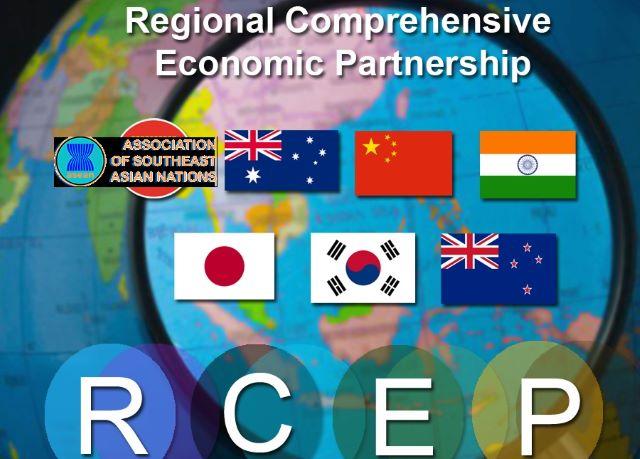Rice, farm products excluded from tariff removal, cuts under RCEP —DTI

Rice and other agricultural produce protected from tariff reductions and eliminations under the recently signed Regional Comprehensive Economic Partnership (RCEP), seen as the world’s largest trade deal involving nearly a third of the global economy.
Trade Assistant Secretary for International Trade Policy and Trade Negotiation Allan Gepty clarified the matter during a virtual presser on Friday.
“Sensitive products for the Philippines such as rice, meat, vegetables, among others in-exclude natin from the commitment,” Gepty said.
“When it comes for sensitive products for the Philippines lalo na sa agriculture sector katulad ng rice in-exclude na namin yan sa RCEP,” he said.
Last week, Trade Secretary Ramon Lopez signed the RCEP trade pact on behalf of the Philippines at the conclusion of the 37th Association of Southeast Asian Nations (ASEAN) Summit and Related Summits on Sunday.
RCEP is a trade accord that involves the 10-member ASEAN along with China, India, Japan, South Korea, Australia, and New Zealand.
India was initially included in the negotiations for the trade deal, but eventually pulled out last year reportedly over various concerns, including possible influx of cheap Chinese products.
The RCEP will facilitate free or liberalized and simplified trade among the participating nations in the Trans-Pacific Region.
“In RCEP, the tariff liberalization for the Philippines is at 98.1% that includes tariff elimination and tariff reduction,” Gepty said.
To address concerns that the regional trade pact will impact vulnerable sectors such as the agriculture due to the influx of cheaper imports from participating countries, the Trade official said that farmers will even benefit as they will have access to cheaper raw materials or farm inputs.
Gepty added that the existing tariffs under the Rice Tariffication Law will remain intact as rice is excluded from tariff reductions and removal under the RCEP.
He said local businesses especially, exporters and manufacturers will benefit from “cheaper cost, convenience in conducting business and trade and investment, competitiveness because of the different rules and disciplines included in the RCEP agreement that will promote a conducive business environment, and complementation because the agreement complements the ongoing programs and initiatives of the government.”
Citing studies by the United Nations Conference on Trade and Development and Philippine Institute of Development Studies, Gepty said exports within the region are seen to increase by 10% due to the RCEP.
“Mag-i-increase ang importation ng intermediate and capital goods... Ang businesses natin can take advantage of selling to different countries in the RCEP region,” he said.
Earlier, the Trade official said the RCEP is expected to enhance market access for key Philippine products including garments, automotive parts, and agricultural products like canned food and preserved fruits.
“It is also a platform for more investments in the country in vital sectors such as manufacturing, research and development, financial services, game development, e-commerce, and the IT-BPO (information technology-business process outsourcing) sector,” he said in an earlier statement.
RCEP negotiations -- which officially started in 2013 -- seek to broader and deepen the engagement among parties and to enhance participation in the economic development of the region.
"The RCEP was built upon the existing ASEAN+1 FTAs with the spirit to strengthen economic linkages and to enhance trade and investment-related activities as well as to contribute to minimizing development gap among the parties," according to the ASEAN.
Negotiations for the trade deal aim to achieve a "modern, comprehensive, high-quality, and mutually beneficial" partnership agreement between parties.
RCEP negotiations include trade in goods, trade in services, investment, economic and technical cooperation, intellectual property, competition, dispute settlement, e-commerce, small and medium enterprises (SMEs), and other issues.
Meanwhile, the regional agreement is expected to be the world's largest trade deal in terms of both population and gross domestic product (GDP).
It is also expected to strengthen regional economic development through easier market access for goods and services, as well as stabilize the market predictability on trade regulations and rules. —LBG, GMA News




